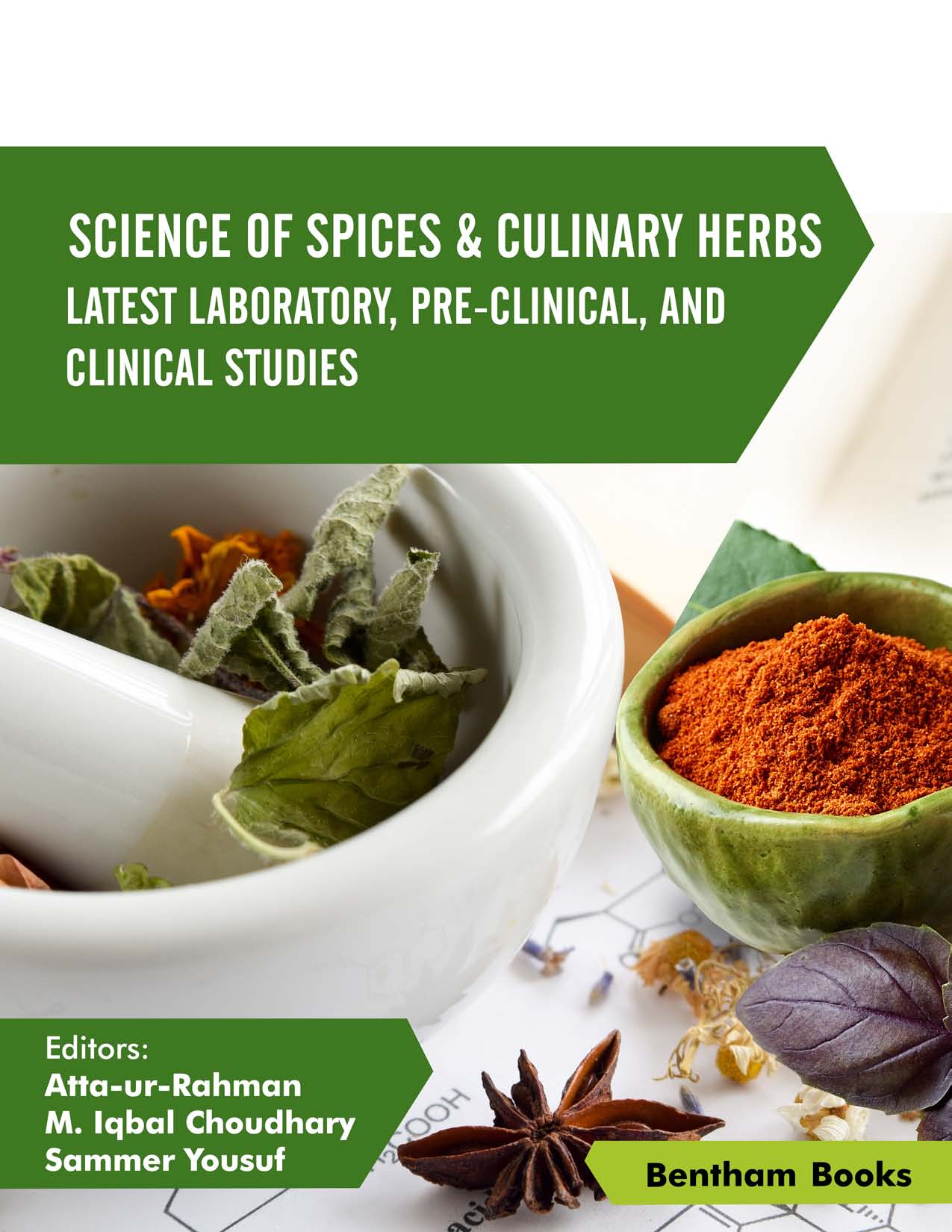Preface
Spices and culinary herbs have been among the richest sources of medicines, fragrances, and recreational substances since antiquity. The modern concept of “food and medicine homology” is largely based on the use of spices as food and medicine. We have recently coined the term “phytodietoceuticals” for all those plant parts that are not only rich in nutrition but also prevent and treat diseases. Extensive research studies on spices and culinary herbs have proven their utility as anti-oxidants and anti-infectious, anti-inflammatory and neuroprotective agents. Volume 6 of the ebook series titled “Science of Spices & Culinary Herbs” is an excellent compilation of ethnobotanical, phytochemical, pharmacological and clinical work being conducted on the most commonly consumed spices and herbs globally. The book series is an attempt to demystify the existing information about these fascinating natural products by presenting comprehensive reviews of scientific studies and their results. This makes ebook series a must to have in general libraries, pharmaceutical R&D institutions, and nature-based healthcare facilities.
The review by Ceyda Sibel Kilic provides an excellent account of the ethnomedicinal uses and phytochemistry, as well as pharmacological, dietary, and cosmetic applications of aniseed or anise (Pimpinella anisum L.). Sinapis alba L., commonly called white or yellow mustard, is the focus of the article contributed by Hattab et al. The authors have explained the taxonomy, phytochemical methods, essential oil extraction, and chemical and biological properties of aniseeds. Maithanil et al. updated the literature review on world-famous herb cinnamon bark powder (Cinnamomum verum J. Presl), covering recent work on tremendous health benefits and mechanisms of action, largely due to the presence of its main constituent, cinnamaldehyde. Recent studies on the globally famous spice tamarind (Tamarindus indica L.) were reviewed by Ahmad et al. The authors have explained the phytochemicals of the pulp of tamarind and their pharmacological and clinical properties. Curcumin, a key constituent of Curcuma longa, has been the subject of extensive research in recent years due to its numerous medicinal properties. Badavath et al. reviewed the work conducted on the synthetic analogs of curcumin for improved anticancer and anti-oxidant properties. Glycyrrhiza glabra L. is the source of licorice derived from its dried roots and rhizomes and used as a natural sweetener. Aksoyalp et al. commented on the novel aspect of licorice pharmacology. They reviewed recent studies on the interplay between the use of licorice constituents and human gut microbiota and resulting therapeutic effects on neurodegenerative diseases.
We gratefully acknowledge the scholarly contributions of all authors and the production team of Bentham Science Publishers for a job very well done. Among them, Mrs. Fariya Zulfiqar (Manager Publications) and Mr. Mahmood Alam (Editorial Director) of Bentham Science Publishers deserve special recognition. We sincerely hope that the contributions of the authors and the production team will help readers better understand and appreciate the therapeutic effects and disease-preventive potential of colorful, tasty, and aromatic spices and herbs.
Atta-ur-Rahman, FRS
Kings College, University of Cambridge, Cambridge, UK
M. Iqbal Choudhary
Mustafa (PBUH) Prize Laureate
&
Sammer Yousuf
H.E.J. Research Institute of Chemistry
International Center for Chemical and Biological Sciences
University of Karachi, Karachi
Pakistan

